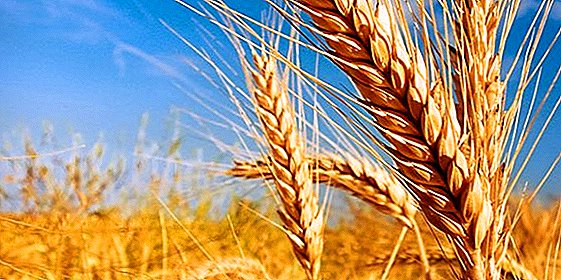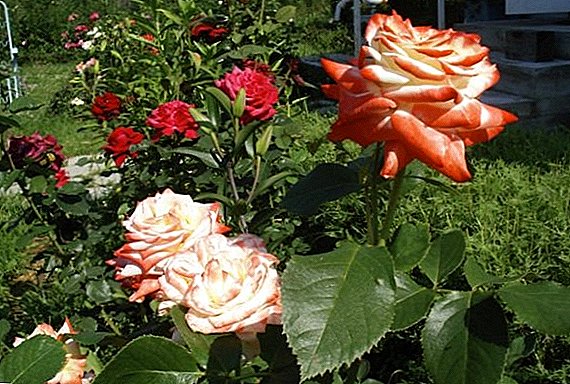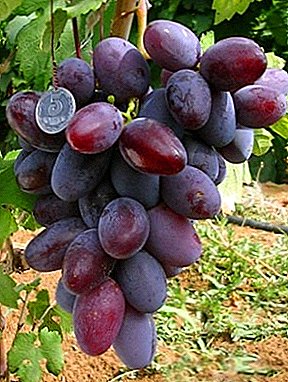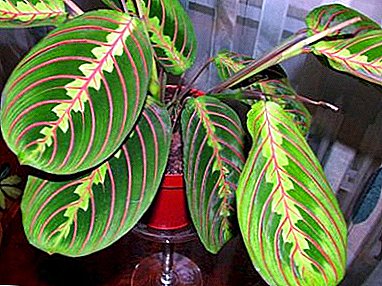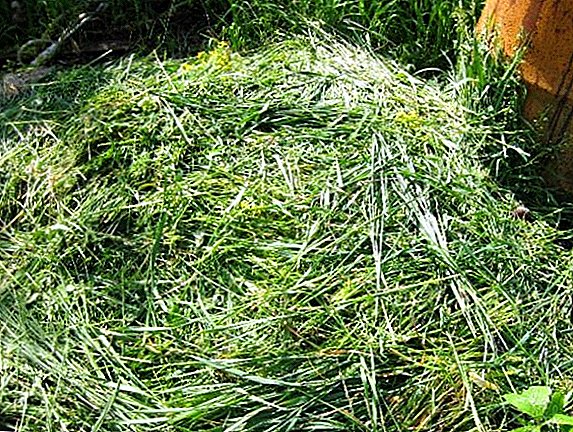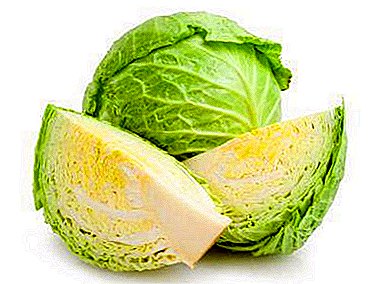
White cabbage can be stored fresh for a long time, the main thing is to choose the right variety. The heads of some cabbage hybrids can remain vitamin and juicy almost until the next harvest.
The best option will be planting late-ripening varieties for long-term storage, as they form strong, dense cabbages. Some late-ripening varieties have a slightly bitter taste, but after they lie down, the taste improves. The shelf life of late ripening hybrids is 6 months or more. But you can plant and mid-season varieties that are stored for up to three months.
Which species is best kept in winter?
Consider the best of them and the most common.
Medium cabbage:
- Krautman F1.
- Rusinovka.
- Relayshen F1.
- Aros F1.
- Amtrak F1.
Mid-grade cabbage:
- Glory 1305.
- Atria F1.
- Dobrovodskaya.
- Present.
- Midor F1.
- Megaton F1.
- Merchant
Late variety cabbage:
- Arctic F1.
- Garant F1.
- Frost.
- Beau Monde Arpo F1.
- Cupid F1.
- Mara.
Rules for selecting seeds for sowing
Before you go for the purchase of seeds, you need to answer the question for what purposes cabbage is needed, and how long the storage time is interesting. If you do not plan to store cabbage for more than 3-4 months, then you can safely choose mid-season hybrids, they will give the crop for 150 days.
If you want to have a fresh cabbage salad on your table in winter, then it is better to buy seeds of middle-late or late species, which ripen from 160 to 170 days.
Winter cabbage varieties become much tastier after a certain period of storage. Late varieties can be stored for 8 to 12 months.
Description
Bilko f1

Excellent hybrid with maturity of 70 days after planting in the ground. Leaves bubbly, rich green. The weight of the head reaches two kilograms with a small stump.
Characteristic variety:
- excellent taste;
- when late planting in the soil, forms a head in the form of a keg;
- high yield up to 7 kg per square meter;
- keeps a good presentation during transportation; head is resistant to cracking;
- the grade is not subject to diseases;
- shelf life up to 4 months;
- suitable for fresh use and for pickling;
- growing seedlings, and without seedling methods.
Cultivation temperature + 15-22 degrees, light day 13 hours. Does not tolerate a strong decrease in temperature, if it becomes 10 degrees lower, then the cabbage will go to the arrow.
When late farming practices plant this hybrid at the end of July and until August 10, depending on the autumn frosts. It is worth noting that the cabbage calmly transfers -4 degrees.
Dominant

Late-ripening hybrid with a ripening period of 130 days after the seedlings are planted in the ground. The weight of one head of 6 kg. Fruits are dense, elastic, on a section have white-yellow coloring. Treats the best grades for the winter. Cabbage contains a lot of vitamin C, has a long shelf life.
Dominant variety is suitable both for fresh consumption and for fermentation.
Agrotechnology:
- Seedlings need to be sown in March, in the second half, shoots appear on day 10.
- In the soil, seedlings are transferred after about 40 days.
- Before transplanting, it is necessary to harden the plant and feed it with mineral fertilizers, for the first time fertilizers are applied when forming a real leaf, the second - before planting in the ground, the third - in the process of growth.
Maximum keeping quality
The duration of cabbage storage depends not only on the variety of the crop, but also on the humidity in the vegetable store, the temperature and the correct method. It is worth noting that there are late-ripening hybrids, the heads of which, collected on time, calmly carry storage from 8 to 12 months. The average storage period of the crop is six months.
How to correctly harvest and save it?
Before laying cabbage for long-term storage, the crop must be properly harvested. For each variety, there is a specific term, which is individual. For example, middle-late varieties are removed from the garden in early or mid-October, and later ones - as soon as frosts start on the street, it all depends on weather conditions. Sometimes this can happen only in November.
 If souring or salting is planned, then it is necessary to harvest in October. It should be understood that if the cabbage intended for long-term storage is collected before full maturity, then the cabbages will quickly turn up, and if they fall under the frost, they will become soft, burst and quickly deteriorate.
If souring or salting is planned, then it is necessary to harvest in October. It should be understood that if the cabbage intended for long-term storage is collected before full maturity, then the cabbages will quickly turn up, and if they fall under the frost, they will become soft, burst and quickly deteriorate.
How to harvest for storage:
- Cabbage is cut in a dry, sunny weather with a sharp knife, leaving 2 cm of the stalk. Culture, collected in the rain, should dry out before it is removed for storage.
- If long-term storage is supposed, then the cabbies should be well-versed, choosing only whole ones without head injuries, on which 3 extreme leaves are left.
For storage, choose a cellar, basement or cold storeroom. But for the safety of the crop, the following conditions must be observed:
- The temperature in the room should be -1- + 1 degrees, with a humidity of 90-98%. If the temperature is higher, the cabbage will sprout, lower - it will freeze.
- Cabbage is very juicy, and therefore the humidity in the room must be observed very strictly.If the moisture is not enough, the culture will quickly dry out, with greater humidity will begin to rot. If the humidity is optimal, then the top leaves will dry out a little and fit tightly to the head.
- It is necessary to put the cabbage so that it does not touch each other, and the stalks should be directed upwards.
Storage room should be prepared in advance.. It is necessary not only to clean the room, but also to disinfect, dry and air. Disinfection is carried out as follows:
- lime the walls;
- fumigate it with sulfur;
- prepare special pallets.
Cabbage should be put in special boxes with slots that are installed on pallets.
There are several ways to keep heads that you should describe so that you can choose the best one for yourself:
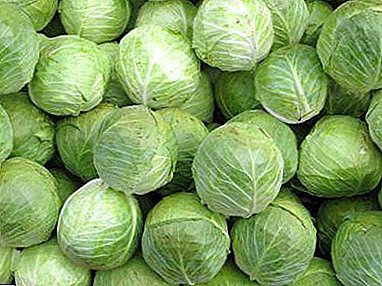 On the floor of the room there is a special pallet with holes for ventilation. On it, with a pyramid, they put cocks in staggered order, from below they are large, and from above they are small.
On the floor of the room there is a special pallet with holes for ventilation. On it, with a pyramid, they put cocks in staggered order, from below they are large, and from above they are small.- Wrap each head of paper in several layers. You can use a newspaper, but not the first layer. Then put it in bags.
- Often used for storage of sand, which cover the floor of the room with a thick layer. The cabbage is placed on it with stalks up and covered with a second layer.
In addition to the above methods tested by time, but now some gardeners use other methods. Cabbage storage methods:
- They wrap each head of food cling in three rows and put it in boxes or coolies.
- Use a dense plastic bags, which are placed on one head, and tied. In this state, the cabbage will be stored as long as possible.
- Some vegetable growers sprinkle chalk on their heads with chalk.
No matter how the cabbage is kept, it must be periodically reviewed and searched, removing damaged specimens.
We offer to watch a video on how to properly store cabbage in the winter:
Conclusion
By choosing the right late-ripening variety, for long-term storage, you can have a juicy, healthy, fresh product on your table all year round.


 On the floor of the room there is a special pallet with holes for ventilation. On it, with a pyramid, they put cocks in staggered order, from below they are large, and from above they are small.
On the floor of the room there is a special pallet with holes for ventilation. On it, with a pyramid, they put cocks in staggered order, from below they are large, and from above they are small.